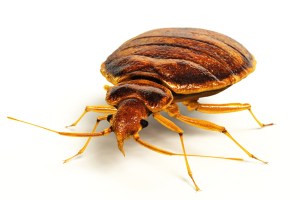Tag: Peter Reuell
-
Science & Tech
Horizontal helper
Cassandra Extavour and Leo Blondel provide the strongest suggestive evidence yet that at least part of a specific gene came from bacterial genomes.
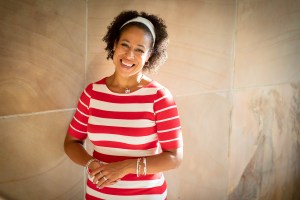
-
Science & Tech
From ancient flooding, modern insights
Tamara Pico, a postdoctoral fellow, is using records of flooding in the Bering Strait to make inferences about how the ice sheets that covered North America responded to the warming climate, and how their melting might have contributed to climate changes.
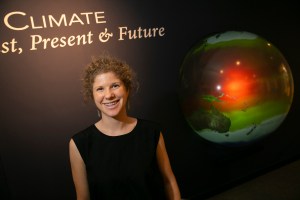
-
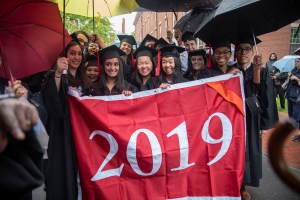
-
Campus & Community
New faculty: Martin Surbeck
A new member of the faculty of the Department of Human and Evolutionary Biology, Martin Surbeck runs one of the few bonobo research sites in the world.
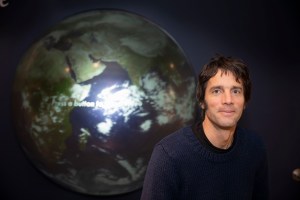
-
Science & Tech
The archaeology of plaque (yes, plaque)
Christina Warinner says ancient dental plaque offers insights into diets, disease, dairying, and women’s roles of the period.
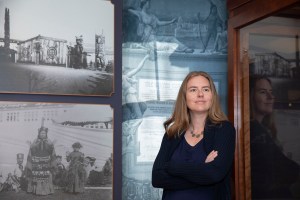
-
Science & Tech
Physics, real and fictional
A Harvard study is exploring the way humans’ sense of “intuitive physics” of the real world leaves fingerprints on the fictional universes we create.
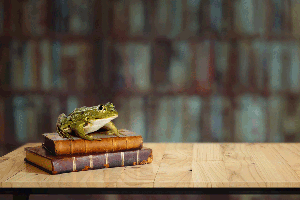
-
Science & Tech
A clue to biodiversity?
An analysis of 20 butterfly genomes found evidence that many butterfly species — including distantly related species — show a surprisingly high amount of gene flow between them, Harvard researchers found.
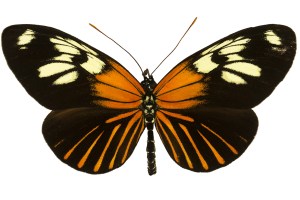
-
Science & Tech
Both marathoner and sprinter
Scientists from Harvard and the University of Virginia have developed the first robotic tuna that can accurately mimic both the highly efficient swimming style of tuna, and their high speed.
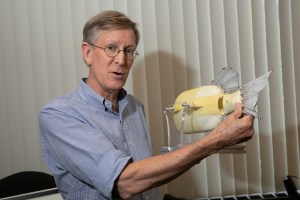
-
Science & Tech
Tiny tweezers
Using precisely focused lasers that act as “optical tweezers,” Harvard scientists have been able to capture and control individual ultracold molecules – the eventual building-blocks of a quantum computer – and study the collisions between them in more detail than ever before.

-
Campus & Community
Promising projects
Sixteen Harvard scientists are among the 93 researchers who have been selected to receive grants through the National Institutes of Health’s High-Risk, High-Reward program, which funds innovative research designed to address major challenges in biomedical science.

-
Science & Tech
Playing our song
Samuel Mehr has long been interested in questions of what music is, how music works, and why music exists. To help find the answers, he’s created the Music Lab, an online, citizen-science project aimed at understanding not just how the human mind interprets music, but why music is a virtually ubiquitous feature of human societies.
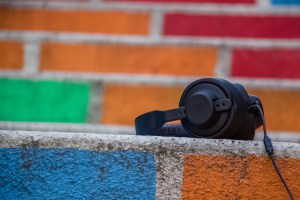
-
Campus & Community
Black hole project nets Breakthrough Prize
The nearly 350 astronomers, postdoctoral fellows, graduate students, and undergraduates who worked for more than a decade to capture the first-ever image of a black hole have been named the recipients of the 2020 Breakthrough Prize in Fundamental Physics.

-
Science & Tech
Lessons in learning
Study shows students in ‘active learning’ classrooms learn more than they think

-
Science & Tech
How a zebrafish model may hold a key to biology
Martin Haesemeyer set out to build an artificial neural network that worked differently than fish’s brains, but what he got was a system that almost perfectly mimicked the zebrafish — and that could be a powerful tool for understanding biology.
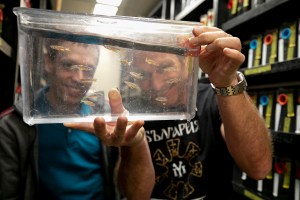
-
Science & Tech
Want to avoid climate-related disasters? Try moving
For decades, the response to flooding and hurricanes was a vow to rebuild. A.R. Siders believes the time has come to consider managed retreat, or the practice of moving communities away from disaster-prone areas to safer lands.
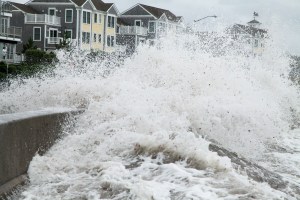
-
Science & Tech
Clever crows
A new paper, co-authored by Dakota McCoy, a graduate student working in the lab of George Putnam Professor of Biology David Haig, suggests that, after using tools, crows were more optimistic.
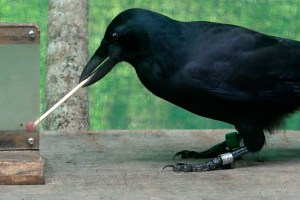
-
Science & Tech
How the moon came to be
A fourth-year graduate student in the lab of Professor of Geochemistry Stein Jacobsen, Yaray Ku is working on a project aimed at understanding how the moon formed, and to do it, she’s working with actual lunar samples.
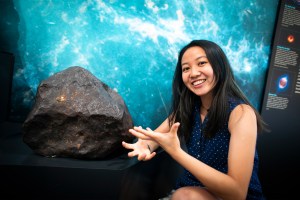
-
Health
What fuels prejudice?
A postdoctoral fellow working in the lab of Psychology Professor Matt Nock,Brian O’Shea is the lead author of a study that suggests racial tension may stem not from different groups being exposed to each other, but fear of a different sort of exposure — exposure to infectious diseases. The study is described in a July…
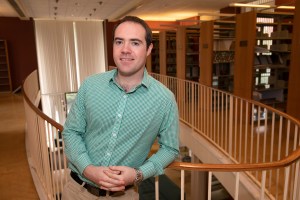
-
Campus & Community
Funding promising scientists
Associate Professor of Physics Cora Dvorkin and Associate Professor of Computer Science Stratos Idreos will each receive at least $150,000 a year for the next five years through the Department of Energy Early Career Research Program.
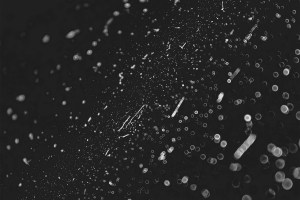
-
Campus & Community
Future M.D.’s passion to help comes in many forms
Cynthia Luo, who’s concentrating in both molecular and cellular biology and English, was inspired by her time in Uganda to become a physician and improve global health.
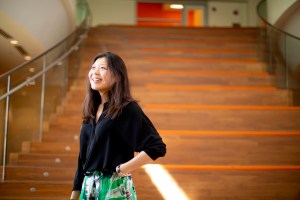
-
Nation & World
Unpacking the power of poverty
Social scientists have long understood that a child’s environment can have long-lasting effects on their success later in life. Exactly how is less well understood. A new Harvard study points to a handful of key indicators, including exposure to high lead levels, violence, and incarceration, as key predictors of children’s later success.
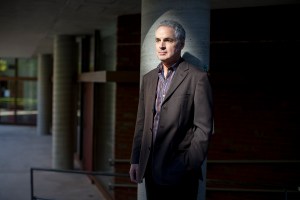
-
Work & Economy
Cities’ wealth gap is growing, too
Harvard research has found that separation between rich and poor communities has increased during the past 40 years.
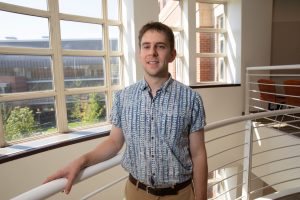
-
Science & Tech
Before the Big Bang
Harvard researchers are proposing using a “primordial standard clock” as a probe of the primordial universe. The team laid out a method that may be used to falsify the inflationary theory experimentally.
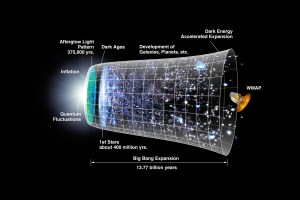
-
Science & Tech
Identifying exotic properties
Though they have unusual properties that could be useful in everything from superconductors to quantum computers, topological materials are frustratingly difficult to predictably produce. To speed up the process, Harvard researchers in a series of studies develop methods for efficiently identifying new materials that display topological properties.
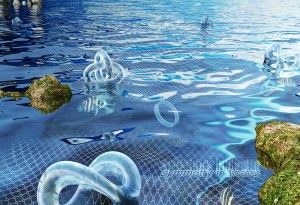
-
Science & Tech
‘Seeing the unseeable’
A years-long effort by dozens of researchers at the Harvard-Smithsonian Center for Astrophysics reveals the first-ever image of a supermassive black hole.
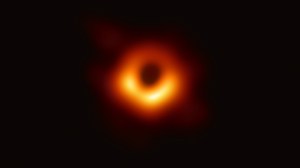
-
Science & Tech
A black hole, revealed
Researchers at the Event Horizon Telescope (EHT) just unveiled the first-ever image of a black hole, which captures what EHT Director Sheperd Doeleman called “a one-way door from our universe.”
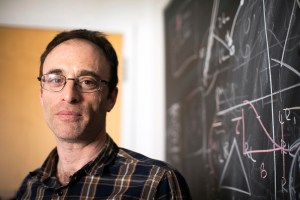
-
Science & Tech
Breaking down ‘Beowulf’
Using a statistical approach known as stylometry, which analyzes everything from the poem’s meter to the number of times different combinations of letters show up in the text, a team of researchers found new evidence that “Beowulf” is the work of a single author.
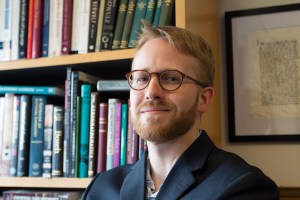
-
Campus & Community
Coding for a cause
Professor Jelani Nelson develops new algorithms to make computer systems work more efficiently, but also takes his educational efforts beyond Harvard’s walls. He founded AddisCoder, a program that teaches students in Ethiopia how to code.
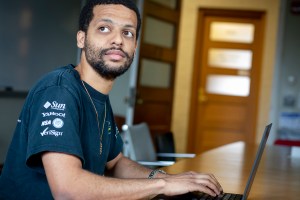
-
Science & Tech
The genetics of regeneration
Led by Assistant Professor of Organismic and Evolutionary Biology Mansi Srivastava, a team of researchers is shedding new light on how animals perform whole-body regeneration, and uncovering a number of DNA switches that appear to control genes used in the process.
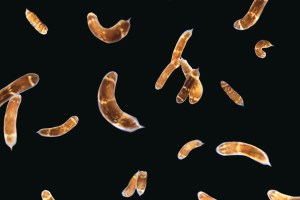
-
Science & Tech
Should landlords have to share what’s been bugging them?
It might seem crazy for landlords to tell potential tenants about past bedbug infestations, but Alison Hill believes it will pay off in the long run. In a study, Hill found that while landlords would see a modest drop in rental income in the short term, they would make that money back in a handful…
